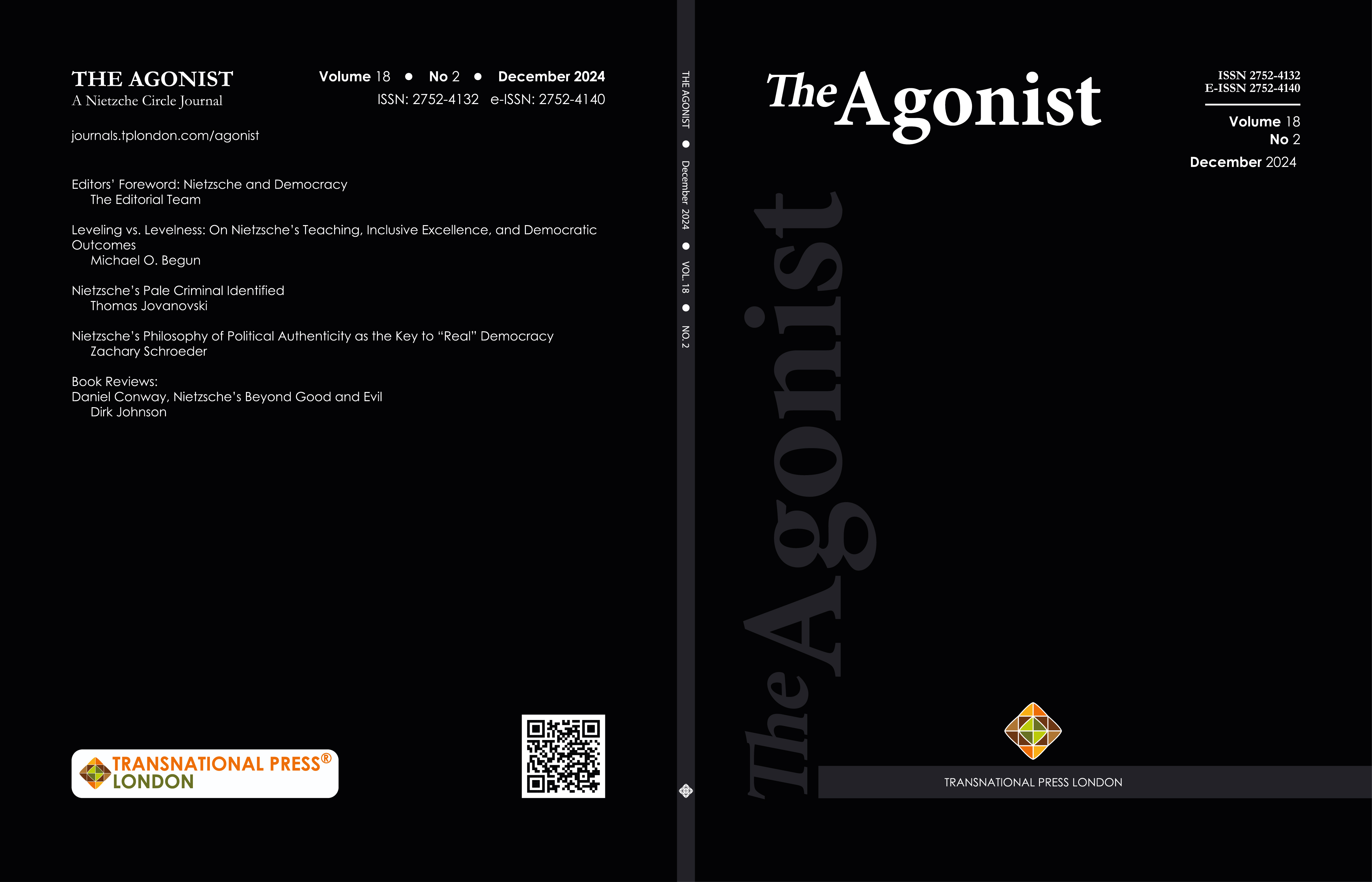Nietzsche’s Pale Criminal Identified
DOI:
https://doi.org/10.33182/agon.v18i2.3393Keywords:
Nietzsche, Zarathustra, pale criminal, murder, Scott HortonAbstract
As he does in most of his books, in Thus Spoke Zarathustra Nietzsche is unfolding his dedicated resistance to established social standards and moral tenets, though in some sections therein in somewhat less than a clearly developed thematic progression. Thus, early in Part I of Zarathustra, we come across a speech by the eponymous character, titled “On the Pale Criminal,” whose locus and relevance to the rest of the text seem to have perplexed every generation of students of Nietzsche’s oeuvre since its initial appearance in print (in 1883). A closer reading of the speech, however, should reveal that the speech’s main character, an (unidentified male) pale-complected criminal, who is about to be condemned to death for the capital crime of murder, is not as incongruous as he might seem at first blush — to the rest of the book or to the world of characters we meet later in Zarathustra or in any of Nietzsche’s other texts. Once we correctly identify the reason for his pale complexion, we might more easily determine his motives as well as the identity of his victim. Once, in turn, we grasp these elements, we notice that the criminal is really a personification of Nietzsche’s two other (self-declared) killers of God, namely, the madman, in the Gay Science, and the inexpressible one, the ugliest man, in Part IV of Zarathustra.
Metrics
Downloads
Published
How to Cite
Issue
Section
License
Copyright (c) 2024 Author, The Agonist, Transnational Press London

This work is licensed under a Creative Commons Attribution-NonCommercial-NoDerivatives 4.0 International License.
All rights reserved.











